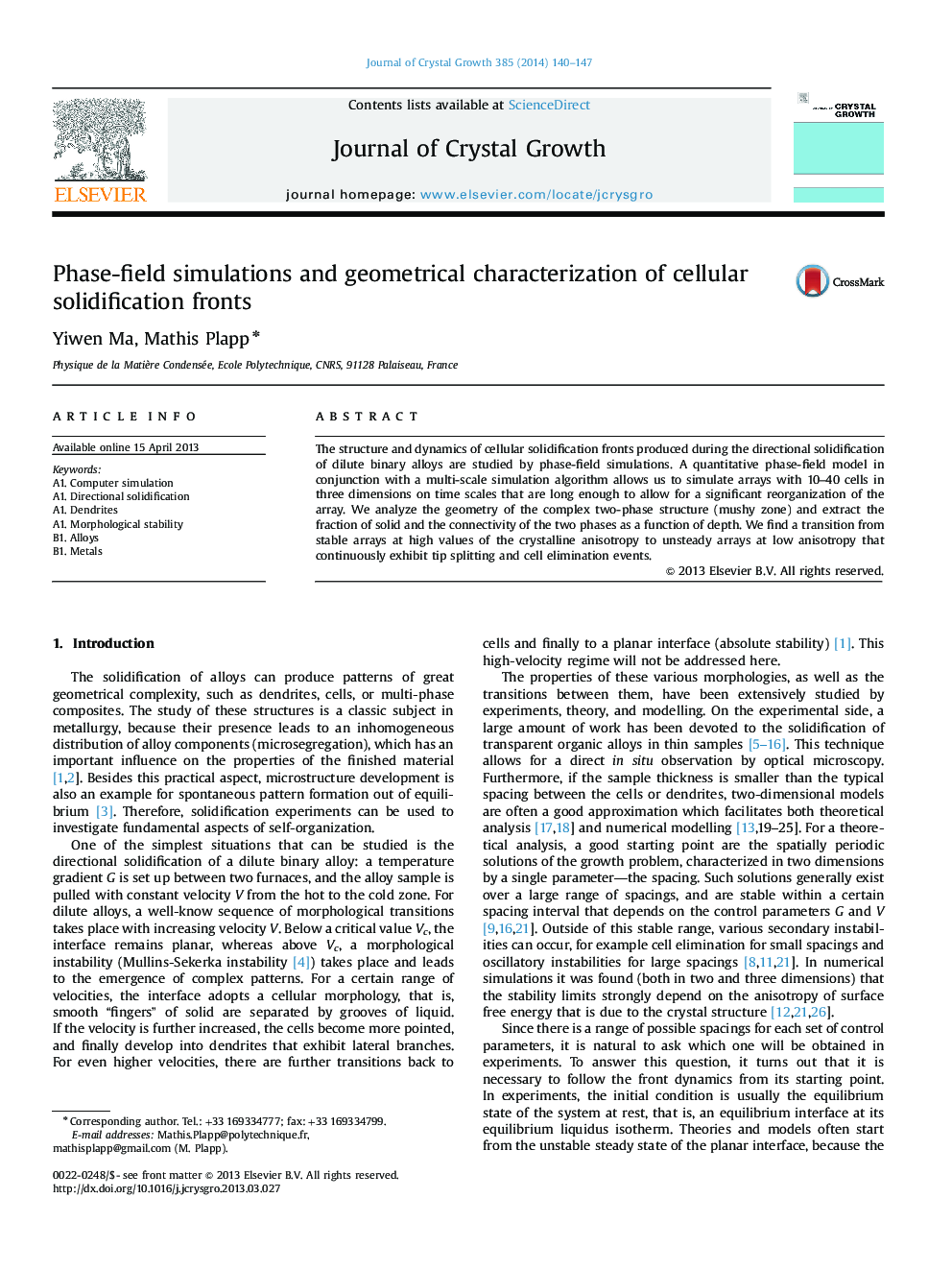| Article ID | Journal | Published Year | Pages | File Type |
|---|---|---|---|---|
| 1790639 | Journal of Crystal Growth | 2014 | 8 Pages |
•Solidification cells are simulated in three dimensions by the phase-field method.•Extended mushy zones are obtained, and geometrical characteristics are extracted.•The connectivity of the solid is determined as a function of depth.•A transition from steady to unsteady cells with decreasing anisotropy is observed.
The structure and dynamics of cellular solidification fronts produced during the directional solidification of dilute binary alloys are studied by phase-field simulations. A quantitative phase-field model in conjunction with a multi-scale simulation algorithm allows us to simulate arrays with 10–40 cells in three dimensions on time scales that are long enough to allow for a significant reorganization of the array. We analyze the geometry of the complex two-phase structure (mushy zone) and extract the fraction of solid and the connectivity of the two phases as a function of depth. We find a transition from stable arrays at high values of the crystalline anisotropy to unsteady arrays at low anisotropy that continuously exhibit tip splitting and cell elimination events.
